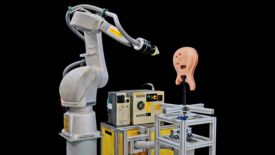Home » standards
Articles Tagged with ''standards''
Automation
The work that employees enjoy least is generally the most suitable for automation.
Read More
Standards 101 | Roderick A. Munro
Training Auditors to Integrated MSS Requirements
There are a few things that could be useful in your internal training program.
January 29, 2024
Column | John Vandenbemden
An Effective Management System and Lean Enterprise Require a Cultural Change
Lean and Management Standards
December 18, 2023
Vision & Sensors | Standards
Camera Link Proves the More Machine Vision Changes, the More it Stays the Same
With so many interfaces available, why is Camera Link still viable?
December 6, 2023
Vision & Sensors | Robotics
What You Need to Know About Robot Safety Standards
A Q&A with A3’s Carole Franklin
November 13, 2023
Lean with Lazarus | Ian R. Lazarus
Lean Principles Have Been Hiding in Plain Sight for Centuries
Improvement is exhausting
September 28, 2023
Column | John Vandenbemden
Volunteers Needed for TAG 69
If you have knowledge, expertise, and willingness to share, come join us on US TAG 69.
September 18, 2023
Management
The journey of revising ISO 10012 20??
There is no mandate to certify to the standard to use it.
September 13, 2023
Quality Headline
BiSN Awarded ISO 9001 Certification for Quality Management Systems
August 29, 2023
Quality Management
The Value of a Certified Quality Management System
What's in a name - or a certification?
July 31, 2023
Get our new eMagazine delivered to your inbox every month.
Stay in the know with Quality’s comprehensive coverage of the manufacturing and metrology industries.
SIGN UP TODAY!Copyright ©2024. All Rights Reserved BNP Media.
Design, CMS, Hosting & Web Development :: ePublishing












